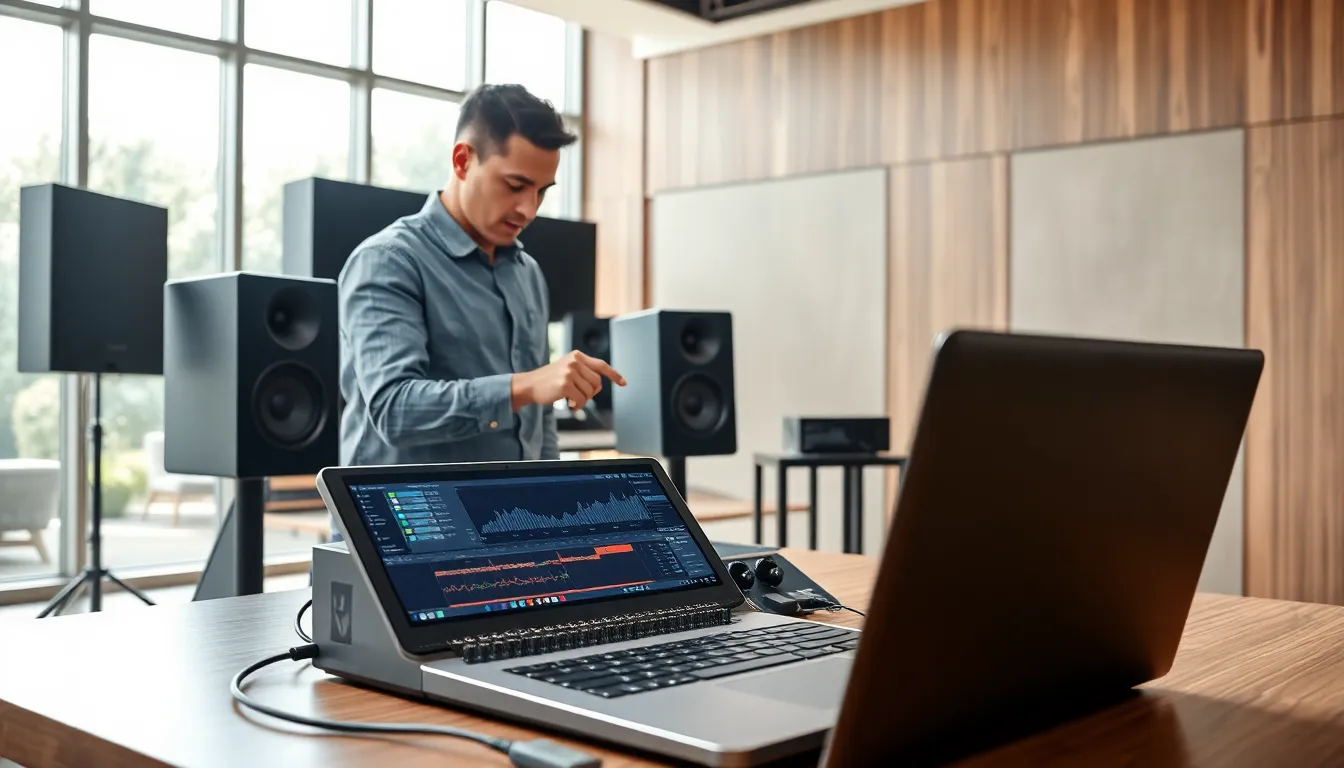Ever wondered why some audio systems sound clearer than others? Enter balanced audio technology: the unsung hero of high-quality sound. It’s like that friend who shows up at the party with snacks, you didn’t know you needed it until it arrived. In this guide, we’ll dive deep into balanced audio technology, unravel its mysteries, and discover why you should consider it for your audio setup. From its core components to its numerous advantages and applications, we’ve got you covered. So, grab your headphones, and let’s get started.
Table of Contents
ToggleUnderstanding Balanced Audio Technology

Balanced audio technology revolves around reducing noise interference in audio signals. Unlike unbalanced connections, which typically use two wires (a signal wire and a ground), balanced connections use three wires, two signal wires and a ground. This is where the magic happens. The two signal wires carry the same audio signal but in opposite polarities. This opposing nature means that any noise picked up along the way is canceled out when the audio signal is processed. Think of it like a superhero duo working together: when one is under attack, the other stands strong, ensuring clarity prevails. In essence, balanced audio technology works wonders by delivering pure sound free of interference, making it a favorite among audiophiles and professionals alike.
Key Components of Balanced Audio Systems
A balanced audio system comprises several components designed to work seamlessly together. The primary elements include:
1. Balanced Cables
These cables typically come in XLR or TRS connectors. They carry the audio signal in a balanced manner, ensuring reduction in noise. Quality matters here, investing in good cables can significantly enhance audio performance.
2. Microphones
Most professional microphones employ balanced output to prevent noise interference, particularly in live sound settings. Choosing a mic that supports balanced output is crucial for achieving top-notch audio quality.
3. Mixers and Preamplifiers
These devices amplify the audio signal while maintaining a balanced output. The importance of having balanced inputs on mixers cannot be overstated, particularly in studios where multiple devices are connected.
4. Speakers and Amplifiers
Many high-end amplifiers and speakers support balanced connections, ensuring that the audio signal remains pristine from source to speaker. This final leg of the journey can dramatically affect the overall sound quality.
Advantages of Using Balanced Audio Technology
Why go through the hassle of setting up a balanced audio system? The benefits are clear:
1. Noise Reduction
Perhaps the most significant advantage is the drastic reduction of ambient noise. This feature is especially essential in environments where electromagnetic interference is prevalent, such as recording studios or concert venues.
2. Longer Cable Runs
Balanced connections allow for longer cable runs without loss of audio quality. While unbalanced systems may start losing clarity over long distances, balanced systems maintain integrity, making them ideal for large setups.
3. Improved Signal Quality
The signaling method employed in balanced audio technology ensures that the audio purity is maintained at high levels. Professionals appreciate this aspect when producing and mixing sound.
4. Versatility
Balanced systems are perfect for a variety of applications, from studio recordings to live performances. The adaptability of balanced audio technology makes it a go-to solution for many sound engineers.
Common Applications of Balanced Audio Technology
Balanced audio technology shines in a number of scenarios:
1. Recording Studios
In studios, maintaining an untainted audio signal is paramount. Balanced connections ensure that recordings remain noise-free and of the highest quality.
2. Live Sound
From concert halls to festivals, balanced systems are widely used to minimize feedback and interference, providing audiences with an immersive sound experience.
3. Broadcasting
Radio and television stations use balanced audio technology to deliver crisp sound quality, enabling clear communication and enhancing viewer experience.
4. Theater Productions
The use of wireless microphones in theater performances relies heavily on balanced audio equipment to ensure that every line is delivered clearly, regardless of background noise.
Choosing the Right Balanced Audio Equipment
When on the hunt for balanced audio equipment, consider the following:
1. Assess Your Needs
What are you using the equipment for? Different scenarios require different setups. A live performance will need different gear compared to a home studio.
2. Connector Types
Opt for equipment that uses XLR or TRS connectors for a balanced setup. These types offer a reliable connection that minimizes noise interference.
3. Brand Reputation
Invest in brands recognized for quality. Reliable manufacturers ensure that their products adhere to the standards necessary for achieving balanced audio performance.
4. Budget Considerations
While it can be tempting to go for cheaper options, remember that audio quality is key. Sometimes spending a bit more can save headaches down the line.
Future Trends in Balanced Audio Technology
As technology continues to evolve, balanced audio technology is keeping pace. Here are some trends to watch:
1. Wireless Balanced Systems
The emergence of wireless audio systems is changing the landscape. Newer wireless technology incorporates balanced principles, reducing noise without compromising mobility.
2. Advanced Signal Processing
With the rise of digital technology, balanced systems are integrating sophisticated signal processing capabilities. This integration enhances audio fidelity in ways previously unimaginable.
3. Greater Accessibility
As demand increases, expect balanced audio technology to become more accessible, even in consumer-grade products. The benefits once reserved for professionals will soon be available to everyday users.
4. Sustainability
In a world increasingly focused on sustainability, expect to see initiatives that ensure balanced audio equipment is manufactured using eco-friendly materials, combining quality with responsibility.







